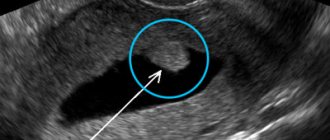General information about the disease
A child with bronchitis coughs very much (it literally “pains” for parents to hear these hysterical sounds), his temperature is elevated, and phlegm comes out profusely. By the presence of sputum and temperature, this disease is distinguished from others, also manifested by cough.
During inflammation, the bronchi become very swollen, as a result of which they narrow, so air flows through them with difficulty. The body, in response to the inflammatory process, produces a large amount of mucus, and the bronchi, through muscle contractions, try to get rid of it so that there is no blockage. As a result, the child coughs and expectorates phlegm.
Prevention
In the modern situation, it is necessary to pay great attention to the prevention of bronchitis. Prevention in children is vaccination against various infections. It is important that not only the child is vaccinated, but that everyone around him is also vaccinated. A big role for children is played by hardening, fresh indoor air, adherence to a daily routine, constant physical education, active walks in the fresh air, proper and regular healthy nutrition appropriate for the child’s age, and the use of vitamins.
Why is bronchitis dangerous?
As a result of this disease, the patency of the bronchi is greatly deteriorated, which reduces the level of ventilation of the lungs. Lack of oxygen negatively affects the functioning of all body systems, dulls brain activity, which outwardly manifests itself as weakness, lethargy, and lack of desire to do even favorite things.
The second reason for the danger of the disease is its possible transition to pneumonia. Despite the poor patency of the bronchi, bacteria and viruses can still move through them into the lungs. Having settled on internal surfaces poorly supplied with oxygen, they multiply, causing inflammation.
Important! In the absence of therapy or improper treatment of bronchitis, pneumonia is one of the most common complications in children of all ages.
What does bronchitis look like on an x-ray?
Whether bronchitis is visible on an x-ray depends on how advanced the disease is. In any case, the signs of bronchitis on X-rays make themselves felt by the heterogeneous structure of the lung; its changes are accompanied by inflammation.
Acute bronchitis
Acute bronchitis on x-ray manifests itself as deformation of the root of the lung, thickening of the walls of the bronchi, unclear contours of the lungs and the disappearance of small vessels from the pulmonary pattern. Advanced obstructive bronchitis, which threatens to develop into emphysema, has the following signs: the presence of abnormal air cavities in the lungs, severe disruption of the pulmonary pattern and changes in the outline of the lung.
Chronical bronchitis
Chronic bronchitis is detected quite easily on X-rays, since the disease usually goes unnoticed for a long time. The main signs of chronic bronchitis on x-ray are: transparency of the lung tissue, vertical position of the heart and thickening of the diaphragm, which means advanced disease. If blood supply problems occur as a result, lung parenchyma is possible, which is visible on x-ray.
Children tolerate bronchitis worse!
Sputum in this disease accumulates quite deeply. The body can get rid of it only through the activity of the respiratory muscles, which are poorly developed in preschoolers. Even a severe cough in children may be ineffective, regardless of its duration. As a result, children suffer more and for longer than adults.
Causes of the disease:
- streptococcus, pneumococcus and other bacteria (sputum can be purulent);
- influenza, as well as other viruses (sputum is yellowish or transparent);
- fungal infections;
- contact with toxins and/or allergens.
The first two reasons are the most common for children, and among them the most dangerous factor in the development of bronchitis is influenza.
Parents should be aware that a child can get bronchitis even if:
- he did not have this disease before;
- you do not allow the child to become hypothermic.
Some believe that nasal inflammation can also “go down”. However, inflammatory processes in the nose or larynx occur locally and do not move.
Is it possible to use antitussive drugs?
A severe cough exhausts both the baby and family members. Of course, you want to alleviate the child’s condition by giving him a drug that relieves cough. But you should absolutely not do this without a doctor’s recommendation! Why? Firstly
, there are a great variety of antitussive drugs, and it is difficult to choose the right one on your own.
There is no drug that can be used from the beginning to the end of the disease - the active substance is selected depending on the stage. Secondly,
an unreasonable selection of an antitussive drug can provoke complications, for example: you gave a child a medicine that suppresses cough at a time when sputum begins to separate, because of this he cannot get rid of sputum, it stagnates and leads to pneumonia.
Thirdly,
children's medications are produced mainly in the form of syrups containing fragrances, flavors, preservatives, stabilizers, etc. - these components often cause allergies.
What you need to pay special attention to
If your child's condition worsens or new symptoms appear
- Cough does not go away after a month
- Bronchitis recurs (more than three episodes per year)
In these cases, be sure to show the child to the pediatrician!
SEPARATELY Do I need to see a doctor for a common acute respiratory infection? Young children can get sick with acute respiratory infections 8-12 times a year - and this is normal, since their immunity is developing, their body is just getting acquainted and learning to resist many viruses and bacteria. And parents, already accustomed to endless colds, often treat the child themselves - because they do not see the point in visiting a doctor every time the child gets sick. But the problem is that only a doctor can determine whether your child has a truly banal acute respiratory infection that does not require drug treatment and intervention in its course, or a more serious condition. In children, all processes go quickly, not all diseases have an acute onset, and without the control of an experienced doctor, you can very easily miss a complication or a more serious illness: the same bronchitis, tracheitis, pneumonia, etc. In addition, children usually play even with a serious illness , jumping and running, which can mislead parents regarding the actual severity of the disease. Therefore, if your child gets sick, be sure to show him to the pediatrician - after all, only a doctor can objectively assess your baby’s condition!
Inhalations: benefits and harm Now nebulizers, devices for inhalation, are extremely popular among parents. Doctors unanimously agree that inhalations are a good thing. Using this device, we can deliver the medicine directly to the bronchi, which reduces the load on the gastrointestinal tract and circulatory system and ensures the rapid action of the drug. But! A nebulizer can only be used when indicated and when using certain medications prescribed by a doctor. Nebulizers are designed to deliver medication to the middle sections of the respiratory system, that is, they are effective for bronchitis and asthma. They should be used with caution for upper respiratory tract diseases (common acute respiratory infections or acute respiratory viral infections). Why? Firstly, because the drugs used to treat the lower respiratory tract are not effective in the inflammatory process in the nasal cavity and pharynx, and secondly, for using a nebulizer for diseases of the upper respiratory tract there are a number of conditions and rules that only doctor.
Symptoms of the disease
The most common form of the disease is viral , and it manifests itself with the following symptoms:
- elevated temperature;
- cough;
- frequent shallow breathing, noise during this process, wheezing;
- decreased appetite;
- drowsiness, weakness (often it is even difficult for the child to get to the toilet).
If the disease is bacterial in nature, the child experiences:
- headache, nausea, vomiting, dizziness and other signs of general intoxication;
- severe deterioration in general condition;
- difficulty breathing, which is accompanied by coughing and wheezing;
- severe increase in body temperature. Source: https://www.ncbi.nlm.nih.gov/pubmed/28828815 Øymar K, Mikalsen IB, Crowley S. Protracted bacterial bronchitis in children Tidsskr Nor Laegeforen. 2021 Aug 21;137(14-15). doi: 10.4045/tidsskr.16.0843. Print 2021 Aug 22
Important! You cannot self-medicate this disease. Especially with its bacterial form - in this case, children are hospitalized and treated only in a hospital setting!
Classification of childhood bronchitis
The duration of the disease is:
- chronic – long-term bronchitis (from three months), which recurs for more than two years;
- recurrent - three times a year or more, the child suffers an illness lasting 2-3 weeks;
- acute – lasts 2-3 weeks.
By nature:
- infectious bronchitis caused by bacteria, a virus, or a combination thereof;
- allergic form – contact with allergens, harmful substances (dust, cigarette smoke, toxins, etc.).
There is also obstructive bronchitis , characteristic of preschool children and manifested by blockage of the bronchus. Its reasons may be:
- very severe swelling of the bronchi (it is most dangerous when their lumen is initially narrow);
- increased viscosity, copious mucus secretion, poor outflow;
- bronchospasm.
In case of frequent obstructive bronchitis, it is necessary to examine the child for bronchial asthma. Source: N.K. Kaytmazova, T.B. Kasokhov, I.E. Tretyakova, Z.A. Tsoraeva Modern ideas about obstructive bronchitis in children // Bulletin of new medical technologies, 2009, vol. XVI, No. 1, pp. 204-206
Causes of bronchitis in children
Acute bronchitis most often occurs when a child becomes infected with a viral infection. In such cases, bronchitis is caused by parainfluenza viruses, rhinovirus, and rhinosyncytial virus. Less commonly, viral bronchitis occurs in children when coronavirus, metapneumovirus, or bocaviruses enter the body.
The second most common cause of bronchitis is a bacterial infection. Bacterial bronchitis is caused by pneumococcus, mycoplasma, and chlamydia. Less commonly - Haemophilus influenzae or Moraxella. In a large number of children, the cause of acute bronchitis is a mixed flora, that is, inflammation occurs when both viruses and bacteria enter at the same time.
Another cause of acute bronchitis is the entry of food and stomach contents into the respiratory tract. This most often occurs in children under 6 months of age and occurs when the baby regurgitates and does not feed properly. This type of bronchitis is called aspiration bronchitis. Inflammation in the bronchial mucosa in this situation occurs for several reasons - the gastric contents act aggressively, as they contain hydrochloric acid and enzymes, and the introduction of gastric and intestinal microflora is also possible, which will cause bacterial bronchitis.
Treatment of bronchitis
Very important! Be sure to consult a doctor if you hear wheezing, severe coughing, or notice other signs of bronchitis in your child. The specialist must determine the nature of the disease and prescribe the correct medications and procedures. Folk remedies and uncontrolled use of broad-spectrum antibiotics are a sure path to complications. Source: M.O. Smirnova, E.V. Sorokina Bronchitis in children: principles of modern therapy // Difficult Patient, 2009, vol.7. No. 8-9, pp. 38-42 Indeed, in 99% of cases, bronchitis is of a viral nature, not bacterial.
What measures can parents take:
- provide the child with plenty of fluids so that mucus does not accumulate in the bronchi and dry to their walls;
- ensure that you take antipyretic medications recommended by your doctor at a certain level of body temperature (38-38.5 degrees);
- do not try to warm the child with household heaters - they make the air too dry and hot, and in case of bronchitis, the microclimate should be cool (no higher than 21 degrees) and with high humidity (about 70%);
- the doctor can teach you a special massage that should be performed at the recommended frequency (but not at high temperatures!);
- Don’t force feed your child if he doesn’t want to – he’s already under a lot of stress and doesn’t feel well, so don’t make it worse.
When the acute phase has passed, the child needs to walk and breathe fresh air. Moreover, even in acute cases, when it is difficult for the patient to go outside, it is possible and necessary to organize “sessions” of fresh air and sunlight: for example, going out onto the balcony after dressing the child warmly. Good ventilation of the lungs reduces the activity of viruses.
What medications are recommended by doctors?
Experts act very carefully with mucolytic agents. With weak chest muscles, it is difficult for a child to cough up large amounts of mucus, and it can literally “flood” the lungs. Cough medications are only necessary in certain cases:
- if the child has serious lung pathologies (congenital anomalies, low production of enzymes to thin sputum, etc.);
- in the presence of obstructive bronchitis, medications are prescribed to expand the lumen of the bronchi;
- a short course of a mucolytic drug can be prescribed if the disease is severe; this measure is combined with massage to remove phlegm and medications that stimulate coughing.
In addition to oral medications, inhalations may be prescribed. But only with the use of medications and special devices recommended by a doctor!
For bronchitis, exclude:
- hot steam inhalations;
- overheating of the chest with hot baths, compresses, clothing, warming ointments, mustard plasters.
Prevention measures
- Do not smoke near your child, or better yet, in the apartment.
- Get vaccinated against pneumococcus and other bacteria that cause this disease in a timely manner.
- Provide your child with ARVI prevention (do not overheat him, dress him in clothes appropriate for the weather, do hardening).
How are x-rays taken to diagnose bronchitis?
X-ray is a procedure that requires the right approach, since the permissible rate of radiation is different for each person. Therefore, if signs of bronchitis are suspected, a doctor will prescribe an x-ray. Before the examination, the patient removes clothing and metal objects that distort the image. The doctor places the patient in front of the device tube in the correct position. Immediately before the scan, the patient will need to breathe into their chest and not breathe or move for several seconds.
Is bronchitis visible on an x-ray of the lungs
? The answer is clear: only its indirect signs are visible, which the lungs perfectly reflect. An additional method of X-ray examination for bronchitis is bronchography, performed with contrast and simultaneously combined with endoscopic examination. However, this diagnostic method is used only if there are clear indications for the study, since it is very unpleasant for the patient.
Advantages of SM-Clinic
We employ some of the best pediatric pulmonologists in St. Petersburg. The clinic has modern diagnostic equipment and conducts accurate laboratory tests in a short time.
Our specialist will correctly diagnose the disease and prescribe an individual course of treatment for your child. We will do everything to restore the baby’s health and prevent complications from the disease. If the patient needs to stay in a hospital, he will be provided with a comfortable and cozy room, and attentive staff will provide round-the-clock care.
Sources:
- https://www.ncbi.nlm.nih.gov/pubmed/28828815 Øymar K, Mikalsen IB, Crowley S. Protracted bacterial bronchitis in children. Tidsskr Nor Laegeforen. 2021 Aug 21;137(14-15). doi: 10.4045/tidsskr.16.0843. Print 2021 Aug 22.
- N.K. Kaytmazova, T.B. Kasokhov, I.E. Tretyakova, Z.A. Tsoraeva. Modern ideas about obstructive bronchitis in children // Bulletin of new medical technologies, 2009, vol. XVI, No. 1, pp. 204-206.
- M.O. Smirnova, E.V. Sorokina. Bronchitis in children: principles of modern therapy // Difficult Patient, 2009, v. 7. No. 8-9, pp. 38-42.
The information in this article is provided for reference purposes and does not replace advice from a qualified professional. Don't self-medicate! At the first signs of illness, you should consult a doctor.
Contraindications to X-rays
An absolute contraindication for X-rays for bronchitis is pregnancy and age under 15 years. Otherwise, the radiation dose received during an X-ray of the lungs ranges from 0.15 to 0.40 m3v per session. While the permissible figure for a year is 20 m3v, you will not get it even with regular diagnostic studies of various organs. All this is thanks to the development of X-ray technologies and the protective measures provided (special lead-lined rubber sheets and aprons), which greatly reduce the amount of radiation received. However, despite this, doctors prescribe radiation examination only when justifiably necessary. Therefore, X-ray for signs of bronchitis is one of the most effective and safe diagnostic methods.
Prices
| Name of service (price list incomplete) | Price |
| Appointment (examination, consultation) with a pulmonologist, primary, therapeutic and diagnostic, outpatient | 1750 rub. |
| Consultation with a candidate of medical sciences | 2500 rub. |
| Professor consultation | 4300 rub. |
| Consultation (interpretation) with analyzes from third parties | 2250 rub. |
| Prescription of treatment regimen (for up to 1 month) | 1800 rub. |
| Study of external respiratory function (RPF) with drug tests | 1800 rub. |
| X-ray of the chest organs (survey) | 1900 rub. |
| X-ray of the chest organs in 2 projections | 2900 rub. |









